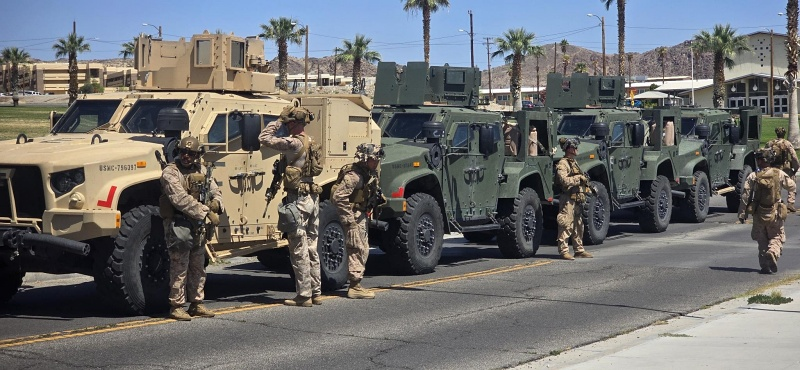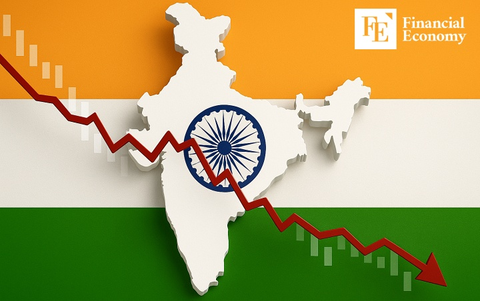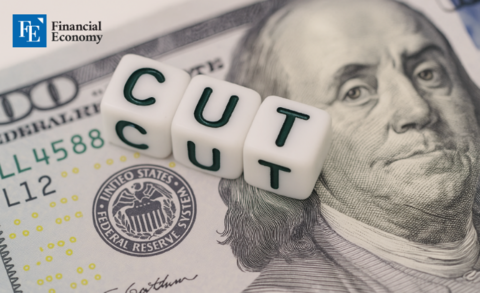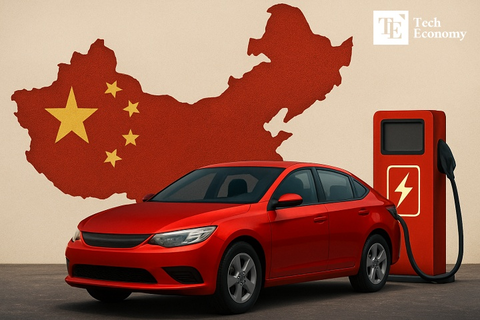“Protest or Rebellion?” — The LA Riots and the Backlash Triggered by Trump’s Anti-Immigration Policies
Input
Modified
Federal-State Power Clash Escalates “Worst Crisis Since the 1992 LA Riots” Anti-Immigration Policies Spark Social Unrest

The mass protests erupting in Los Angeles have escalated into what is effectively a riot, marked by armed demonstrators, the display of Mexican flags, and incidents of civilian shootings. U.S. President Donald Trump has declared the unrest a “rebellion” and formally authorized the deployment of suppression forces. His stance stands in stark contrast to that of the California governor, revealing deep divisions over how to respond. What began as a backlash against Trump’s hardline anti-immigration policies has now evolved into a broader expression of anger—one fueled not only by undocumented immigrants but also by the frustrations simmering across the low-wage labor market in the United States.
“Insurrection or Human Rights?” — A Nation Divided
On the 9th (local time), U.S. Northern Command released a statement on its official website, announcing, “We have activated a Marine infantry battalion that had been on standby over the weekend,” adding, “Around 700 Marines from the 2nd Battalion, 7th Marine Regiment, under the 1st Marine Division, will support Title 10 forces protecting federal personnel and property in the Los Angeles area.”
Title 10 refers to federal troops deployed under a U.S. law that allows the president to send military forces into a state without the governor’s request.
Just two hours prior to the Northern Command’s announcement, President Donald Trump had been asked by the press whether he intended to send in Marines following the National Guard to quell the LA protests. He responded, “We’ll see how things go,” asserting that “we are controlling the situation well,” and claiming that had he not ordered the deployment of the National Guard, “things would have gone very badly.”
Though leaving open the possibility of deploying additional forces, he had implied that such a move would be delayed.
Trump’s sudden change of plans is largely seen as a direct result of his ongoing clash with California Governor Gavin Newsom. Labeling the situation “not a protest but a rebellion,” Trump ordered a forceful crackdown and even issued instructions for the arrest of demonstrators wearing masks.
In contrast, Governor Newsom has insisted that “freedom of expression must be protected,” maintaining a restrained approach toward crowd control. This has created a stark confrontation between the federal and state governments. Trump has not hesitated to publicly lambast Newsom, calling him a person who is “neglecting law and order.”
This conflict starkly illustrates the growing tensions over authority between federal and state governments in the U.S. While the federal side pushes for aggressive measures—like deploying troops—to restore order, the state government focuses on containing the unrest with minimal use of police force.
From Trump’s perspective, this amounts to a national security threat, and Newsom’s handling of the situation borders on constitutional negligence. On the other hand, Newsom’s camp has dismissed the federal intervention as a “political performance,” decrying it as an infringement on state autonomy.
Mexican Flags and Breakdown of Public Order
The protests in Los Angeles, which began on the 6th in response to intense crackdowns by U.S. Immigration and Customs Enforcement (ICE) on undocumented immigrants, have escalated far beyond simple marches and chants. Eyewitnesses have described the events as bordering on full-blown riots.
Some demonstrators appeared on the streets armed with rifles, prompting the California state government to urgently deploy 300 National Guard troops to restore order. Protesters demonstrated coordinated discipline as they clashed physically with police forces.
Tensions intensified even further following President Trump’s remarks endorsing a forceful crackdown. The federal government went so far as to officially mention the possible invocation of the Insurrection Act—a law enacted in 1807 that grants the president legal authority to deploy military forces in response to rebellion or civil unrest. Invoking this law would signal both a state government failure and a declaration of national emergency.
The last time the Insurrection Act was used was during the 1992 Los Angeles riots, which followed the police beating of an African American man. In that case, a large-scale deployment was carried out at the request of the California governor, and around 4,000 troops were mobilized.
What makes the current crisis particularly symbolic—setting it apart from previous anti-government protests—is the presence of Mexican flags in the hands of demonstrators, not American ones. This striking image goes beyond mere opposition to government policies—it reflects a direct assertion of political identity and discontent from within immigrant communities in the U.S.
The sight of foreign flags being waved on American soil has inflamed conservative outrage and rapidly fueled the perception that “non-Americans” are causing chaos in the country. This symbolism is part of what led President Trump to define the situation as an outright rebellion.

Protests Escalate as Direct Backlash to Immigration Policy
At the heart of the increasingly violent LA riots lies President Donald Trump’s hardline immigration agenda, which he has pushed since his candidacy. From the outset of his administration, Trump has made the deportation of undocumented immigrants a central priority—pursuing an aggressive crackdown that ranges from building a border wall to large-scale immigration raids. More recently, enforcement has expanded dramatically, shifting from targeting violent offenders to including undocumented workers lacking employment visas. Tom Homan, the administration’s chief immigration official, declared that the country would witness “unprecedented levels of workplace raids”—a warning that is rapidly becoming reality.
The core issue, critics argue, is that these policies have spread widespread hostility and systemic discrimination against immigrant communities. Over time, this social undercurrent has reached a boiling point—erupting in the form of riots.
Reports indicate that the majority of those participating in the protests are either non-citizens or individuals with undocumented family members. The Trump administration’s intensified crackdown has effectively relegated these individuals to the status of “second-class citizens” in American society. Protesters consistently point to this sense of identity loss and existential threat as the root cause of the current unrest.
Discontent with the administration’s immigration policy extends well beyond immigrant communities. Many small business owners and low-wage employers are also voicing concerns over labor shortages and operational disruptions caused by the crackdown.
According to Goldman Sachs, as of 2023, approximately 4% of America’s 170 million workers were undocumented immigrants without employment visas. These workers—largely concentrated in construction, agriculture, and other low-wage sectors—have long propped up the outer edges of the U.S. economic ecosystem. The ongoing riots reveal that the crisis is no longer confined to street-level clashes but now poses a deeper threat to the cohesion and stability of entire communities.




















